Articles
-
Cracks may form in the horse's hoof wall, usually in a vertical direction, and either originate from the ground surface (sometimes called grass cracks) or, less commonly, from the coronary band (sometimes called sand cracks).
-
Mini-pigs may be housed successfully inside if they are given enough space, an area in which to root, and proper environmental enrichment. Ideally, pet pigs should have access to a safe area of untreated lawn outside in which to root and chew on grass.
-
Laminitis is a common but still incompletely understood condition that causes varying degrees of foot pain, from the slightly pottery pony to severe life-threatening lameness.
-
Good management is the key to preventing or controlling the spread of disease. Good management practices aim to keep horses in good condition and in a healthy environment, in order to reduce the risk of introduction and spread of disease, to identify individuals especially at risk and to promote rapid recovery if disease does occur.
-
When a farrier shoes a horse, accurate placement of each nail through the insensitive epidermal laminae of the hoof is essential. The nail must penetrate deep enough to hold firm, but not deep enough to penetrate the sensitive laminae of the hoof.
-
The horse's hoof is a very complex structure. The tough outer wall surrounds layers of sensitive laminae ('leaves') that support, nourish with blood and, in turn, cover the underlying pedal bone.
-
Infection in the foot is by far, the most common cause of acute (sudden), single-leg lameness in the horse. Infection results in painful inflammation and pus (abscess) formation.
-
Seedy toe is a separation of the horse's hoof wall from the underlying sensitive laminae at the white line, resulting in a cavity that fills with crumbling dirt, horn and debris and is prone to associated infection.
-
Some horse owners feel that it is necessary to 'clean' a colt or gelding's prepuce (sheath) and penis on a fairly regular basis.
-
The most common skin problem in mini-pigs is dry skin that results from a dietary deficiency of fatty acids. In addition to dry skin, mini-pigs commonly suffer from sarcoptic mange, parakeratosis, yeast dermatitis, and sunburn. Hooves of mini-pigs grow continuously throughout life and need to be trimmed periodically. The canine teeth (tusks) of male pigs grow throughout life, while those of female pigs stop growing at about two years of age. Starting after the pig is about a year of age, your veterinarian will trim tusks during an examination.

